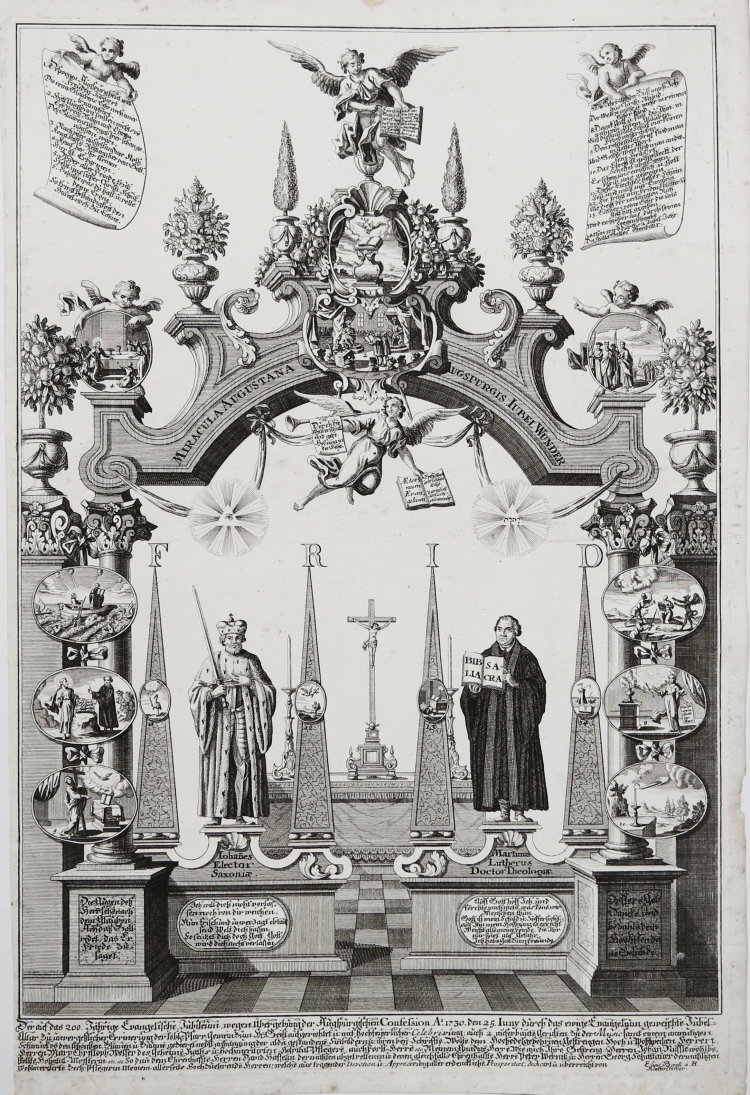



| Reference: | S46760 |
| Author | Elias BAECK |
| Year: | 1730 |
| Measures: | 320 x 475 mm |


| Reference: | S46760 |
| Author | Elias BAECK |
| Year: | 1730 |
| Measures: | 320 x 475 mm |
Augsburg Confession commemorative sheet with allegory.
Etching, 1730, signed in the plate at lower right.
Allegorical sheet commemorating the 200th anniversary of the Augsburg Confession under Emperor Charles V (1530). Includes a very rich allegorical apparatus, with the figures of Emperor John Frederick I, Elector of Saxony, and that of Martin Luther.
The Augsburg Confession, also known as the Augustan Confession or the Augustana from its Latin name, Confessio Augustana, is the primary confession of faith of the Lutheran Church and one of the most important documents of the Protestant Reformation. The Augsburg Confession was written in both German and Latin and was presented by a number of German rulers and free-cities at the Diet of Augsburg on 25 June 1530. The Holy Roman Emperor, Charles V, had called on the Princes and Free Territories in Germany to explain their religious convictions in an attempt to restore religious and political unity in the Holy Roman Empire and rally support against the Ottoman invasion in the 16th-century Siege of Vienna. It is the fourth document contained in the Lutheran Book of Concord.
Beautiful proof, printed on contemporary laid paper, with margins, in good condition.
Elias BAECK (Augsburg 1679 - 1747)
|
Elias Baeck, of Augsburg, called 'Heldenmuth,' who was born in 1679, was a painter and engraver. He worked for some time in Rome, then in Laybach, but finally returned to Augsburg, where he died in 1747. His chief works — both in painting and engraving — were portraits and landscapes. His engravings are sometimes marked E. B. a. H. (Elias Baeck, alias Heldenmuth).
|
Elias BAECK (Augsburg 1679 - 1747)
|
Elias Baeck, of Augsburg, called 'Heldenmuth,' who was born in 1679, was a painter and engraver. He worked for some time in Rome, then in Laybach, but finally returned to Augsburg, where he died in 1747. His chief works — both in painting and engraving — were portraits and landscapes. His engravings are sometimes marked E. B. a. H. (Elias Baeck, alias Heldenmuth).
|